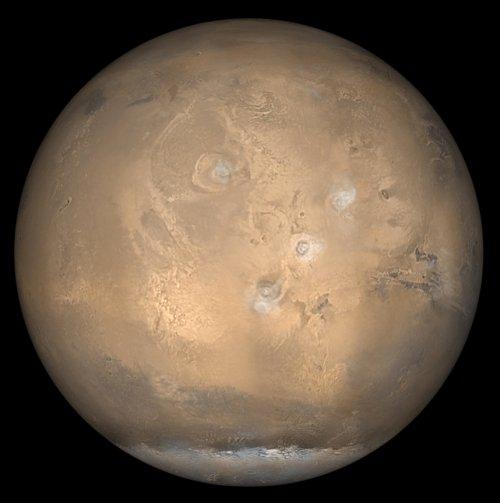
This is what Mars looks like in late northern summer, which is also late southern winter. At this time of year, the south polar cap (bottom, white feature) is very large, extending from the south pole northward to 60°S. Clouds of water ice crystals extend over the four largest volcanoes in Tharsis. The picture shows the four volcanoes forming a triangle resembling the pattern of holes on a bowling ball. Whisps of clouds can also be seen above a small section of Vallis Marineris at the far right and center of the image.
NASA / JPL / Malin Space Science Systems
The majority opinion, however, is that in the first billion years of martian history, liquid water was at least intermittently released onto the surface of Mars. Furthermore, the water probably ponded in short-lived lakes in low plains and some crater floors, lasting for months or many years.









